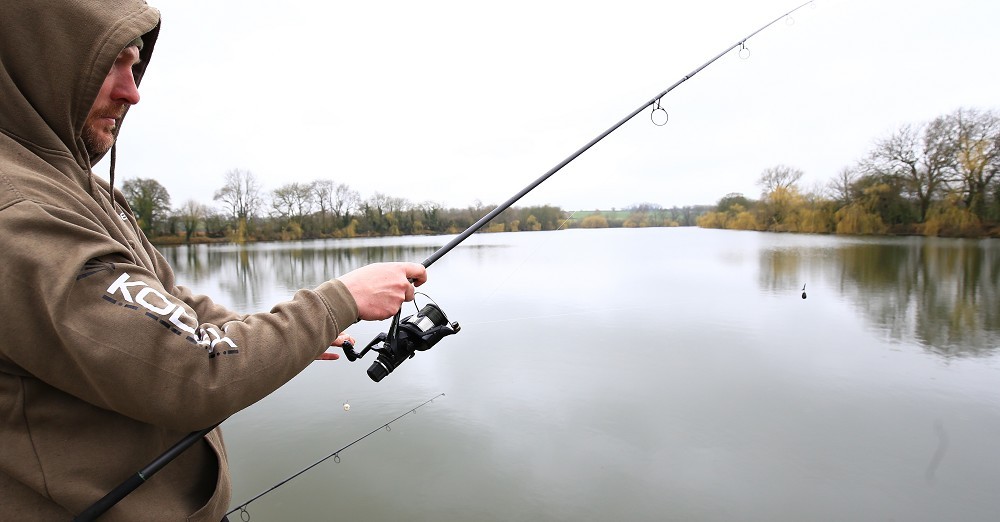
Stepping up to bigger waters
Moving from an intimate one-acre lake to a reservoir or ‘big pit’ of 20 acres or more can seem very daunting...
Moving from an intimate one-acre lake to a reservoir or ‘big pit’ of 20 acres or more can seem very daunting, but it’s worth remembering that carp are still carp, and they’re just as catchable in big waters as they are in small ones. Your approach and mentality, however, may need to change in order to make the transition effectively. Mike Salisbury explains…
I mentioned in my previous article for CARPology that stepping outside of your comfort zone and trying a new water can often reinvigorate your buzz for carp fishing. This is particularly relevant when you make the step up and try fishing on waters that are far bigger than you are normally used to.
Equipment-wise, you need to evaluate whether or not your gear is up to the task. On the small venues that I fish regularly, such as park lakes and intimate club waters, I rarely deviate from using my Kompact CN rods. The flexibility of being able to use them at 9ft or 10ft is ideal for the “nook and cranny” type of swims that I’m often faced with. Long casts are not necessary either, so anything over 10ft is overkill. However, they aren’t the only type of water that I fish, as I often frequent big venues of 20 acres or more. Presented with a new set of challenges, I have to make sure that I choose the right tools for the job, otherwise I will not be fishing 100% effectively. I don’t know about you, but if I’m on a session and thinking “if only I had this bit of kit I could fish far more efficiently than I am at the moment”, then that really bugs me and it can ruin the whole experience.
Recently, I visited Clattercote Reservoir in Oxfordshire, which is over 20 acres in size. At over 22ft deep in some places, it can present challenges despite being reasonably well-stocked. My choice of rods for this session were the new Kodex CX-i 12ft 3.25lbs t/c, as I had just started testing them out. On a larger water such as Clattercote, 12ft rods are definitely a better option, as they give you that extra yardage on your cast when you need it. This is certainly true of the new CX-i’s, as the 50mm butt ring facilitates long casts with minimal effort from you. Even at 3.25lbs the playing action is very forgiving, and they certainly aren’t heavy on the arm.
I’ve grown quite fond of these rods and I want to make sure that my butt-rests keep them firmly locked in place, so I’m using really innovative new butt rests called ‘Klampdown’. These rests fit either slim/abbreviated rods or wider-blanked/shrink-wrap rods, as by removing part of the inner section of the Klampdown rest, you can accommodate a rod with a wider blank. They also ensure that the rod stays firmly put until you lift into the fish, so you can be confident that your prized possessions won’t get pulled in on a really aggressive take. The Klampdown has a unique release design for when you strike, too, and it’s better than any other rests I’ve used in the past.
Another important thing that is well worth remembering is that in bigger lakes, the carp are more likely to move around in shoals. Therefore on lakes that are well stocked, multiple hits of fish are a distinct possibility. In addition, these waters can have specific times of the day or night when the carp switch on to the feed, and will move en-masse to areas in which they can find food. Bearing these things in mind, you need to ensure that you have enough bait out in your spots, and that it is in areas which carp will frequent. You can find these areas with the use of a marker float or echo sounder - areas in which you get drop-offs from shallower to deeper water are ideal as these will often form patrol routes for hungry carp. Indeed, this was the key to my recent success at Clattercote, as I found an area in which it shallowed up from 22ft to a nice flat area of 17ft. This was the main area in which I concentrated my bait and, on both the evenings I fished there, the carp turned up like clockwork around 4pm and started feeding. As I had plenty of bait out there I was able to hold them in the swim for a number of hours, and enjoy a multiple hit, ending the session on a cracking 23lbs mirror.
Distance sticks and line-clips on your reel are definitely your friends for fishing bigger waters. The more accurately you concentrate your bait and get your rig on top of it, the more likely you are to succeed. As I mentioned before, it’s all about fishing efficiently. Do that, and you will definitely be on the road to succeeding as you make the step up to larger venues.






